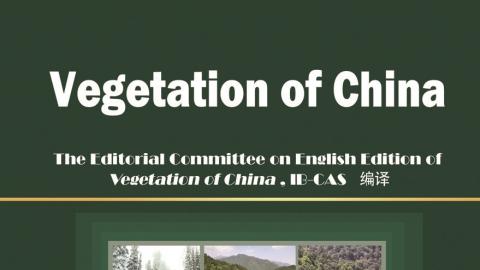The forthcoming publication of the English edition of Vegetation of China is a pleasant event. I would like to express my warm congratulations to the editors and translators, Professors Li and Yang in particular.
Published in 1980, Vegetation of China was a sweeping generalization of the achievements in studies of contemporary vegetation ecology in China, and it was also a full reflection of the laborious efforts made by three generations of Chinese researchers in this field. The book expounded on major vegetation types and their floristic characteristics, as well as the distribution pattern of the Chinese vegetation as a whole, based on extensive field surveys and reference to voluminous literature. The book also conducted in-depth analyses of the genesis, evolution and succession of Chinese vegetation in a historical context. Of special significance is that the book created a Chinese vegetation-oriented classification system for the first time, which is still, without any exaggeration, one of the most widely influential systems in the world. Since its inception, the monograph has had a profound and vast influence nationwide on vegetation research and its related fields, and has been a fundamental book for students and new practitioners of vegetation ecology in China.
China is a vast country bounded by a long, continuous coastline with deep inlands, featuring extremely complicated environmental conditions and a long history of geological and biogeographic evolutions. Consequently, its landform, vegetation and flora are among the richest and most diverse in the world. The Qinghai-Tibet Plateau alpine vegetation and the subtropical broad-leaf evergreen forest are the most extensive and unique of these types. The southeastern part of the QT Plateau has been an important distribution and origin center for the world’s floras, and also contains the northernmost extremity of the Earth’s rainforests. One of Vegetation of China’s most important contributions is that it comprehensively and rigorously revealed for the first time the floristic composition, community traits and vegetation classification systems of these two vegetal regions.
Nevertheless, due to various difficulties, its English edition has not been previously available,which has substantially limited its potential appreciation and use by our international colleagues. For example, several authors of the series Ecosystems of the World noted that “due to the unavailability of data and materials with regards to China, certain relevant contents are rather incomplete and inconclusive.” I believe that the publication of this English edition may greatly reduce knowledge gaps in many areas of the field of ecology.
Personally, I think that the tropical origin theory of Chinese flora created by Professor Wu Zhengyi,the chief editor of the monograph, has been another important contribution. In the chapter he authored on the topic, he more fully elaborates on the overall floristic characteristics of Chinese vegetation in much greater detail, along with 15 distribution types (elements). Although analogous findings have been reported independently in many of his previous articles, the comprehensive summary that appears in this book is the first of its kind to be formally released, especially from a vegetation perspective.
Professor Wu was one of the most outstanding and respected scientists in China. His achievements in plant systems and geo-botany are plentiful, substantial and extraordinary. As a winner of the highest Chinese national awards in science and technology, he enjoyed the utmost regard in the scientific community at home. Many of the authors of this work have been leading ecologists and pioneers in their field. The publication of this English edition is undoubtedly the best inheritance and cumulation of their efforts and scientific thoughts.
As a long-term collaborator and friend of Professor Wu—who was also one of the co-editors-in-chief for Flora of China—I know very well the difficulties of independently editing English works by Chinese authors, and thus their efforts deserve many congratulations.
Hong De-yuan
President Emeritus of the Botanical Society of China
Academician of the Chinese Academy of Sciences
August 2019, Beijing


